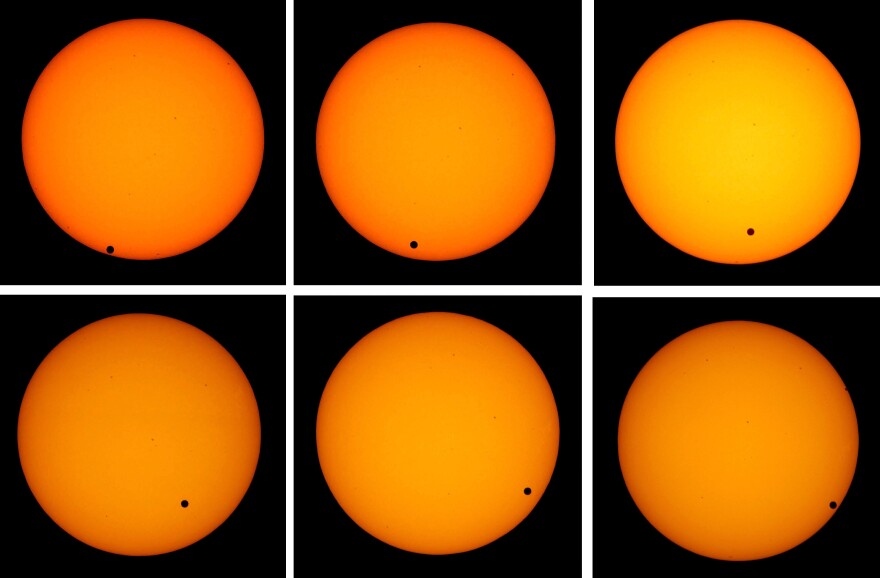
03 January 2024
The Loganda Pillars stand as silent sentinels on the edge of South Africa’s vast and untamed Great Karoo. Here, in the small railway town of Touws River, these two concrete pillars are a celestial marvel to all who encounter them. Now weathered by the passage of time, they tell the tale of a forgotten history of astronomical wonder and early scientific advancements—the first of its kind in Southern Africa.
Located in what was once a hotel courtyard, one pillar commemorates the site “…where a piece of star once fell” and one bears the handwritten inscription titled: “The Transit of Venus“. Dating back to 1882, the Loganda Pillars mark a pivotal astronomical event and, although unassuming at first, represent a groundbreaking moment in global astronomy.
The origin of the Loganda Pillars traces back to the formation of the Cape Observatory, later known as the Royal Observatory, which played a significant role in solving the solar parallax problem during the 18th and 19th centuries. Some of the most noteworthy planetary transits were observed from the Cape of Good Hope, including the first ever observation of the transit of Venus in 1761 (and the only observation within the South Atlantic region).
After the initial disappointment of the 1761 and 1874 observations of the transit of Venus—which produced poor recordings resulting from a lack of adequate equipment, multiple setbacks, and undesirable weather conditions—the British decided to send out astronomical expeditions to seven different countries around the world, with the hope of carrying out timed contact observations, supplemented by heliometer measurements, from various points on Earth. A group of these British astronomers headed for Touws River (Then called Montagu Road), bringing with them all the necessary tools and expertise. And, in the small and remote town of Touws River, six observers independently observed the rare and remarkable event of the transit of Venus on December 6, 1882.
Touws River was strategically chosen by the British for its clear weather conditions in December, marking the start of Summer in the Southern Hemisphere. The town’s optimal position was ideal for accurately determining the international longitude of the event. Its remote nature, free from light interference, combined with its proximity to Cape Town, also allowed the British astronomers to effectively utilise the telegraph network, which was widely used for communication throughout Sub-Saharan Africa at the time.

The significance of planetary transits lies in the measurement of the solar parallax, an angle that determines the distance between the Earth and the Sun. And, determining this angle is achieved by observing planetary transits. When viewed from different locations on Earth, the transits of planets occur at slightly different times, an effect called “parallax”. By recording precisely when the transits either begin, or end, in different places on Earth, astronomers are able to calculate the distance from Earth to the Sun (known as one astronomical unit).
This astronomical unit serves as a foundation for calculating distances within the solar system. Indeed, determining the solar parallax was one of the great fundamental millennium problems faced by astronomers. For, not only does the parallax provide us with a measure of distance to the sun, but, by precisely calculating the distance between the sun and the Earth (the astronomical unit), astronomers are also able to determine all other distances in the solar system, unlocking vital insights about our universe and surrounding celestial objects.
A transit of Venus across the Sun takes place when the planet Venus passes directly between the Sun and a superior planet, becoming visible against (and hence obscuring a small portion of) the solar disk. During a transit, Venus can be seen from Earth as a small black dot moving across the face of the Sun.
Only two inner planets, between the Earth and the Sun, Mercury and Venus, can transit the disk of the Sun and still be observable from Earth. While transits of Mercury are more common (occurring at a rate of 13 to 14 times per 100 years), Venusian transits only occur at a rate of 13 to 14 times per 1000 years. The last transit of Venus was on 5th and 6th of June, 2012, and was the last Venus transit of the 21st century; the prior transit took place on 8th June 2004. The previous pair of transits were in December 1874 and December 1882. The next transits of Venus will be in December 2117 and December 2125.